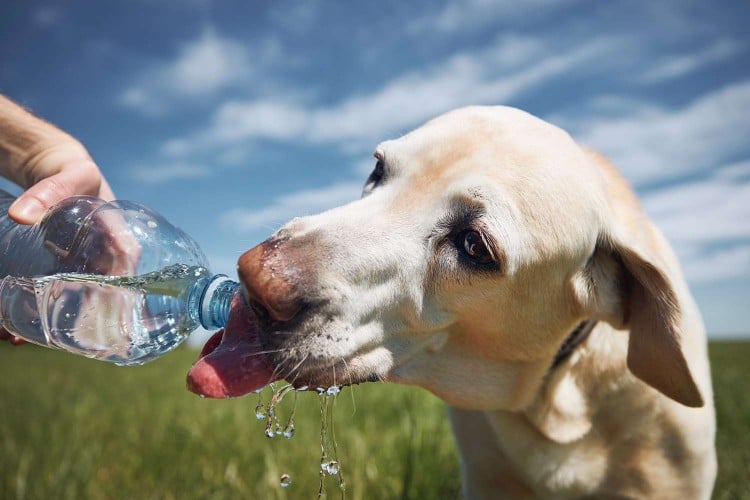How Often Do Dogs Need to Pee? A Vet Explains

When the whimpering, pacing, and door monitoring starts, your pupper is sending clear signals that she's got to go. But how often do dogs need to pee, anyway?
Every dog (and their bladder capacity) is different, but a good rule is to let your dog out to urinate at least every six hours, says Brian Evans, DVM, medical director at Dutch. Though this is the minimum, it's best to let pups relieve themselves more frequently.
"The two most universal times to take your dog out are first thing in the morning and again right before bed," Evans says. "From there, they need to go out one or two more times at minimum, based on your schedule. If they don't have free access to a yard or place to relieve themselves, then plan on coming home or getting someone like a dog walker to let them out once or twice a day, depending on how long you'll be away."
Everything You Ever Wanted to Know About Hiring the Right Dog Walker for Your BFF
How Often Do Puppies Need to Pee?
"Puppies don't have the ability to hold their urine until they're about 4 months old, so taking them outside every one to three hours is the best way to prevent new wet spots in your house," Evans says. Think of it this way: For every month of age, that's approximately an hour a puppy can control urination, but even that's really stretching her limit.
When she's about 2 months old and you start potty training, you might be able to expand to every two hours, depending on what signals she gives you, how much she's eating and drinking, and so on. But it's best to keep a puppy's itty bitty bladder top-of-mind until you're certain potty training is successful, so letting her out every 30–60 minutes helps her understand the process.
"Even at 4 months old, they can't hold it the whole day," Evans adds. "They just start to make progress and hold it for longer intervals." So until your pup is about 6 months old, you might need to create a containment area, which could be someplace with a pee pad coordinated off by a doggie gate or a room with tiled floor—so you can wipe up any accidents easily.
Remember: Never yell at or punish your pet for an accident. She won't understand the mistake. Simply get her outside as soon as possible or, if the damage is done, move on. But make a note regarding the time and circumstances to avoid further incidents, then resume positive reinforcement training.
How to Clean Pet Pee Stains From the Carpet
How Often Do Older Dogs Need to Pee?
Evans says while many elder pups maintain their ability to hold their urine and feces as they age, others become incontinent as they reach the end of their life. "There can be several factors as to why this occurs, ranging from poor nerve function, their bladder control, or even severe arthritis that prevents them from getting up frequently if the pain is too much," he adds.
Evans advises consulting your veterinarian about changes in your dog's urination issues and making a plan as to how best to support your pet. Ideas include:
- Similar to a puppy's potty training, become more aware of your older pooch and her urination signals. The previous elimination schedule of every six hours might have to be altered to every three or four hours to accommodate her new phase in life.
- Make sure she has easy access to places to relieve herself.
- Provide stable flooring to help her move around the house without obstacles.
- Consider pain medication if arthritis is a problem.
- Dog diapers might also be a solution, especially when there are gaps of time between when your pet can go outdoors.
Is My Dog Peeing Too Much (Or Too Little)?
It's vital to pay close attention to how often your dog needs to pee and what happens when she does. Just like humans, canines experience certain health conditions featuring irregular potty issues as prime symptoms, such as:
- An unusual odor, which is often a sign of infection
- Blood in the urine
- Difficulty eliminating
- Increased thirst and urination, which are sometimes symptoms of diabetes
If you spot blood in your dog's urine but have a male or spayed female pet, this may suggest a problem with kidney stones, a urinary tract infection (UTI), or even a more serious medical issue, such as cancer.
If your dog strains to go or it seems painful, she could be suffering from bladder stones. These hard, crystalized mineral formations range in size from tiny bits of sand to larger, almost gravel-like rocks. Many risk factors contribute to bladder stones, including dehydration, metabolism problems, and urine acidity. Bladder stones might also be an indication of a more severe condition, such as kidney disease.
Bottom line: Take your canine pal out to pee frequently, and note how she feels and what the result is. If anything seems unusual, arrange for a veterinary exam right away.








